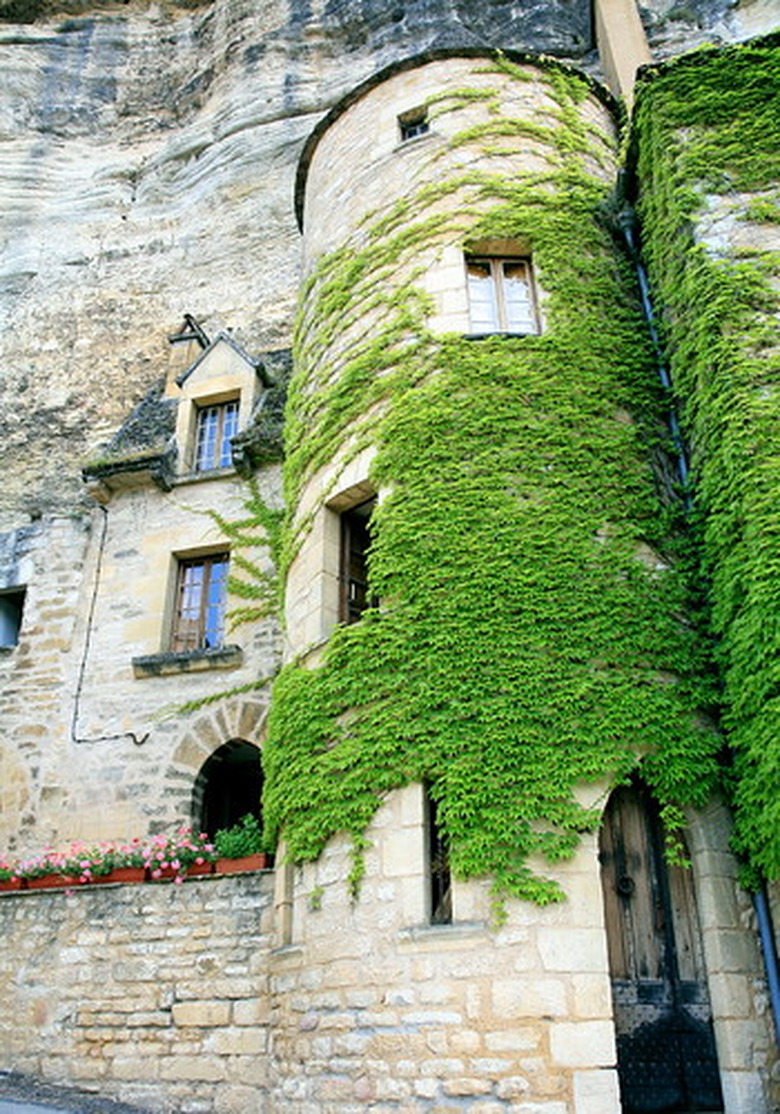Black Spot Fungus On Ivy
Two diseases cause spots on the leaves of English ivy, and both are commonly called "black spot." One is caused by a fungus; the other is caused by bacteria. Both diseases thrive in moisture on ivy leaves, and the preventative measures are similar. However, proper identification is key because they require treatment with different chemicals.
Fungus
The fungus Colletotrichum trichellum, also called anthracnose, is sometimes called fungal black spot. Its produces dry, reddish-brown lesions about 3/4 of an inch in diameter that spread inward from the top margins of ivy leaves, and fruiting bodies appear on the lesions. Lesions can form on the leaf stems, causing premature defoliation, die-back or even the death of scattered patches of ivy.
- Two diseases cause spots on the leaves of English ivy, and both are commonly called "black spot."
- Both diseases thrive in moisture on ivy leaves, and the preventative measures are similar.
Fungal leaf spots are often irregularly shaped and produce concentric rings as the spots become larger. The fruiting bodies on each spot look like black pepper.
Bacteria
Bacteria called Xanthomonas hederae are the most common cause of black spot on English ivy. Small, round, oily, dark green spots appear on the leaves, growing into larger lesions with greenish-brown, water-soaked margins. The centers are reddish brown to black.
Older leaves have reddish-brown to black margins, and their bottoms look water soaked. A yellow halo sometimes surrounds older lesions. In dry weather, the leaf centers become dry and cracked. In wet weather, black cankers develop on the stems and stalks of the leaves. The black decay advances on the stems until the tips turn black and die.
- Fungal leaf spots are often irregularly shaped and produce concentric rings as the spots become larger.
- In dry weather, the leaf centers become dry and cracked.
How to Identify
If you don't see the fruiting bodies of fungal black spot, place some infected ivy leaves and a moist paper towel in a plastic bag overnight. If the leaf spots are fungal, they should have fruiting bodies the next day. While bacterial black spot causes cankers on the stems, fungal leaf spot doesn't.
Considerations
To germinate, the spores of all fungal diseases that infect ivy require a film or drop of water on a leaf. The spores are disseminated by splashing rain or irrigation and by gardeners tending plants while wearing wet clothes. Mites can carry spores from one plant to another.
Prevention
Keep ivy foliage dry. Don't use overhead watering in greenhouses; water only the roots and potting media. Don't splash water on the plants. Water early in the day so the plants can dry before night.
- If you don't see the fruiting bodies of fungal black spot, place some infected ivy leaves and a moist paper towel in a plastic bag overnight.
- To germinate, the spores of all fungal diseases that infect ivy require a film or drop of water on a leaf.
Remove dead stems, leaves and other debris early in the spring before new leaves begin to grow. Prune the ivy occasionally to prevent dense growth. Bacterial black spot is common on leaves that are in the shade, close to wet ground or near water spouts.
Treatment
Benomyl and other widely available commercial fungicides can be used to treat black spot fungus on ivy. Dr. A.R. Chase, a professor of plant pathology at the University of Florida, recommends spraying bacterial black spot with 1 lb. of Aliette 80WDG and Kocide per 100 gallons of water.
- Remove dead stems, leaves and other debris early in the spring before new leaves begin to grow.
- Benomyl and other widely available commercial fungicides can be used to treat black spot fungus on ivy.
